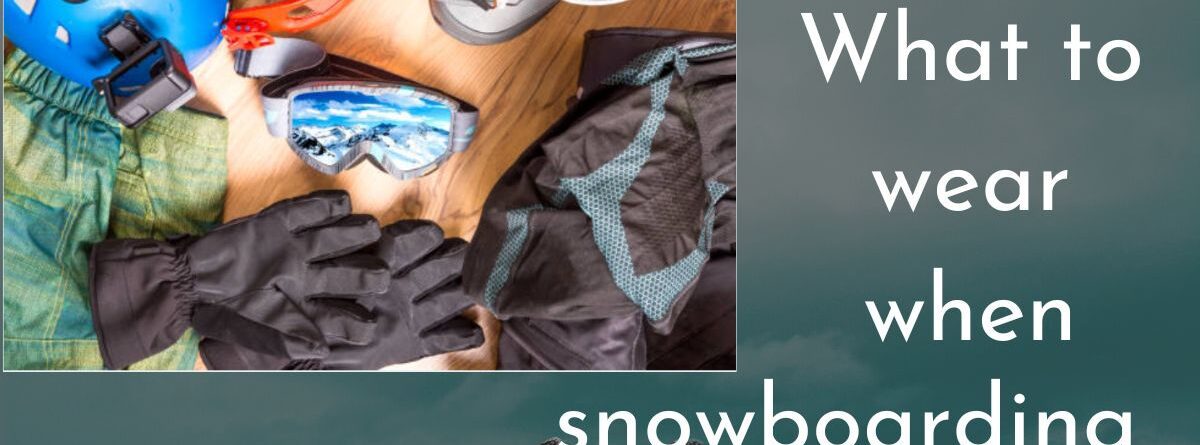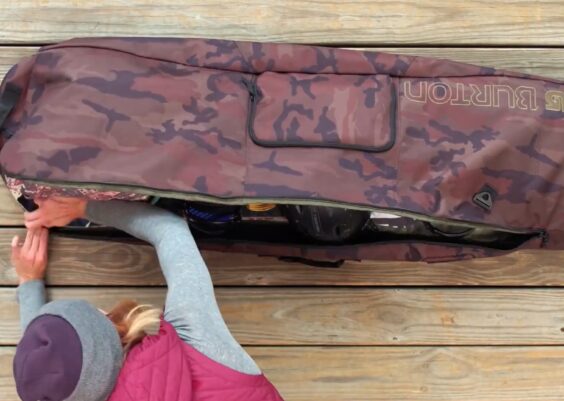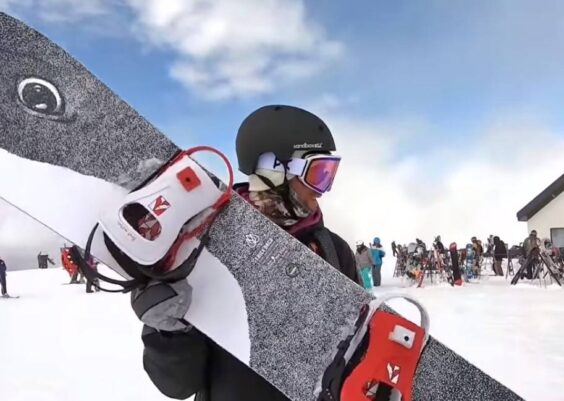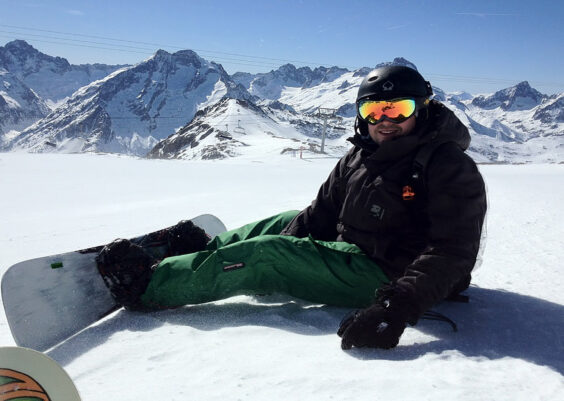Many a wannabe snowboarder has quit the sport due to wrong apparel choices. Snowboarding is an extreme sport that happens in extreme conditions.
As a beginner into snowboarding, you must first ask what to wear when snowboarding.
Your apparel choices in extreme sports matter a lot. A cold and an uncomfortable start is a major dampener for a newbie.
The immense popularity of snowboarding has spawned many industries that make snowboards and snowboarding accessories.
As a result, many products are vying for your attention. Unfortunately, while the problem of plenty is excellent, the sheer variety stumps a newbie.
It is crucial to learn what to wear snowboarding the first time. This will avoid any teething troubles and get you decked up to handle the slopes confidently and in comfort.
This write-up will attempt to unravel the exact science behind proper snowboarding attire. This knowledge will allow you to choose wisely among the best possible combination of clothing to get a jump start.
How to dress for snowboarding
It gets chilly on the slopes. Initially, you may take many falls, and if you went there in your jeans, you would spend the rest of the day miserably in front of the fire.
You must learn how to dress like a snowboarder. To do that, you must understand how many layers to wear snowboarding.
Layering is all about what you wear underneath the snow jacket and pants (shell). The base layer is all about breathability and wicking away perspiration.
The insulation layer varies with the condition. The colder it is, the warmer the insulation layer should be.
Finally, the shell or the outer layer protects you from the wind, rain, and snow. Read on to know more.
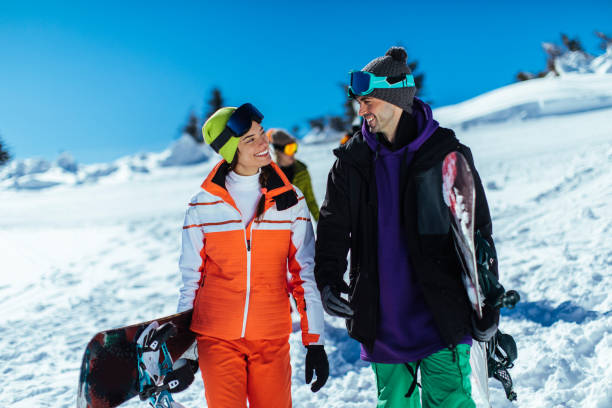
What to wear under snow pants
The snow pants are basically a shell layer designed to keep away moisture. However, they don't provide too much insulation.
Some snow pants, especially for women, may have a soft lining, such as fleece. It is recommended that you wear a breathable inner base layer for warmth and wicking away sweat.
When considering the base layer under your snow pants, avoid cotton or any material that becomes soggy and retains moisture.
This will make you feel cold and clammy. Extremely uncomfortable when you are out on the slopes! So, chinos, jeans, cotton leggings, sweatpants, etc., are a no-no.
Long johns, also known as long underwear or thermal underwear, are best suited for wearing under your snow pants.
They are often made of wool or polyester that are great at wicking away sweat and keeping you warm and snug.
For extreme weather, you have heated ones, like the Action Heat 5 V Heated Men's Long Underwear Pants.
Other popular high-performance brands that we can think of are- Helly Hansen, Thirty two, Volcom, Mountain hardwear, Patagonia etc.
What to wear under a snowboard jacket
When it comes to your upper body, a three-layer approach is best. This section will not dwell too much on the base layer much as it has been dealt with in the earlier section.
What works for your legs works with your upper body. The focus here will be on the insulation or the mid-layer between the outer shell and the inner layer.
The best thing about the mid-layer is that you don't have to worry about breathability or waterproofing. This lets you play around a bit.
Depending on the conditions, you can choose between a fleece sweatshirt, a sweater, or a warm down jacket for extreme cold.
You need to ensure that it fits comfortably under the shell.
Some brands we tested under various conditions: Helly Hansen, Patagonia, Paramo Grid, Montane, Columbia Steens, North Face, Arc'teryx Atom, Rab® Xenair, etc.
Snowboarding Jacket
You can't avoid getting wet on the slopes, even if you are an advanced snowboarder. As a beginner, you will take spills while learning the ropes.
In addition, the snow tends to melt slowly, and if you are not wearing a waterproof outer shell, you will become cold and miserable.
Snowboarding jackets are the most essential part of all snowboarders' outfits. They are wind and waterproof. They prevent moisture from getting in and counter the wind chill factor in high altitudes.
The fabric used for making them is waterproof, and the seams in the jackets are taped. This prevents the water from getting in through any holes caused while sewing.
The waterproofing of snowboard or snow jackets is rated in milliliters. A higher rating means better waterproofing.
These jackets can be broadly divided into simple shell jackets and insulated jackets.
Simple shell jackets have no insulation. They are light and are designed to be wind and waterproof.
They are made of waterproof fabric and may contain water-repellent coatings and unique windproof technology. They let you layer as you please, depending on the conditions.
On the other hand, insulated jackets have built-in insulation and are an all-in-one kind of design. You can use fleece as a mid-layer under them if it becomes too cold.
Though they are heavier and bulkier than shell jackets, many snowboarders prefer them for their no-fuss design.
While choosing the warmest snowboard jackets, you need to consider the following aspects- the shell, waterproofing and breathability index, taped seams, pockets, venting, cuff design, collar design, fit, and jacket to pant interface.
Snowboarding Pants
Shredding without a good pair of snowboarding pants is a big no for all of us. When you zigzag down the slope, your snowboarding pants are hard at work, keeping your lower body warm and dry.
These pants are made of materials like Gore-Tex, Hyvent, and DryRideto to keep out the water and wick away sweat.
Like snowboard jackets, snowboard pants can be broadly divided into two types- shell pants and insulated pants. Shell pants are light and offer the versatility of layering.
They may have minimal lining like fleece. On the other hand, insulated pants have a lining (usually fleece or materials like Primaloft) under the waterproof exterior.
When choosing snow pants, you must pay particular attention to the waterproof and breathability rating. A rating of 10,000mm usually covers all scenarios.
The fabric's breathability rating is indicated by grams. These ratings vary according to the price. Starting with 2,000-3000g, the rating goes up to around 25,000g.
Snowboarding pants with a high breathability rating will be costlier.
Other things to consider are- durability, taped seams, pockets, and features like articulated knees, boot gaiters, scuff guards, vents, jacket to pant interface, suspenders, etc.
Snowboard gloves
Your hands can get really cold on the slopes if not well protected. Therefore, choosing the right pair of gloves is crucial.
A wrong choice will result in frigid fingers or, even worse, frostbite! Since snowboarding does not require gripping ski poles, you have plenty of options to choose from.
Most snowboarding gloves consist of a shell made of synthetic materials such as nylon. Good quality gloves have waterproof breathable fabric, usually with a membrane or a coating to repel water.
In addition, high abrasion areas like the palms and fingers are protected with leather or synthetic materials.
Usually, the gloves tend to get wetter from the inside on the slopes. So along with waterproofing, the breathability of the fabric should be the foremost consideration for snowboarding gloves.
You can choose between gloves and mittens. Gloves offer better dexterity while mittens, more warmth.
Snowboarding Balaclava
In the frigid and windy slopes, the wind chill factor wreaks havoc on uncovered parts of your body.
The face and ears are mostly uncovered and can become frostbitten in extreme conditions. On extra cold and windy days, snowboarding balaclava is mandatory.
A snowboarding balaclava mask is a type of winter headgear that covers the head and face while leaving the eyes and nose exposed.
Traditionally made of wool, balaclavas nowadays use a variety of materials. The best ones are lightweight, breathable, and made with materials such as wool or high-tech polyester fiber.
What to wear under snowboard helmet: Snowboarding Beanie
All snowboarding helmets have a lining for warmth and comfort. They are usually warmer than traditional hats or fleece-lined caps.
But on freezing days, you'll appreciate an extra layer underneath your helmet. They effectively stop the cold wind from blowing in underneath your helmet.
Snowboarding beanies are the perfect candidate for that extra layer. They are typically made of synthetic materials like acrylic.
While choosing a beanie, ensure that the fabric provides good insulation with high breathability.
In addition, your choice should fit snugly under your snowboarding helmet and must not interfere with your snowboarding goggles.
Snowboarding goggles
When you are surrounded by snow, you'll be amazed at the amount of glare reflected off the surface of the snow.
Sometimes, prolonged exposure to this glare can cause snow blindness! A typical session on the slopes lasts for a while. Without a pair of good snowboarding goggles, your eyes will suffer.
Glare is not the only thing that snowboarding goggles protect you from. They seal your eyes entirely and prevent damage from debris, wind, and snow.
Polarized goggles also enhance visibility- critical while zipping down the slope.
When it comes to types, you can choose from single lenses (inexpensive), dual lenses (better insulation), flat lenses, and spherical lenses.
You also have a wide variety of tints like rose, yellow, mirrored lenses, etc. You also have low light/high-intensity lenses for night riding.
Your snowboarding goggles should fit snugly under your helmet and other headgear, such as the balaclava.
It is always better to shell some extra $$ for polarized glasses as they provide better UV protection and glare reduction. You have snowboarding goggles that are designed to be worn over spectacles too.
Snowboarding helmets
The last item in this is also one of the most important. Any extreme sport involves a lot of spills. And, the most vulnerable part of your body is the head.
Snowboarding helmets protect your head by absorbing shock during an impact. Never ride a snowboard without your snowboarding helmet.
Snowboarding helmets are of three types- in-mold, hard shell, and hybrid.
In-mold helmets use a tough polycarbonate in the outer shell and are lined with a foam liner to absorb impact. They are light, durable, and vent well.
Hardshell helmets have a durable ABS shell bonded with an EPS liner. They have lesser vents but last a long time.
Hybrid helmets combine in-mold and hard-shell builds. This gives them the best of the other two models- durability and lesser weight.
While choosing a snowboarding helmet, pay particular attention to the fit. It must gel well with your other headgear, such as a balaclava or beanie, and must be comfortable enough to let you wear them for extended periods.
An adjustable venting system is essential too. This lets you control the airflow in different conditions.
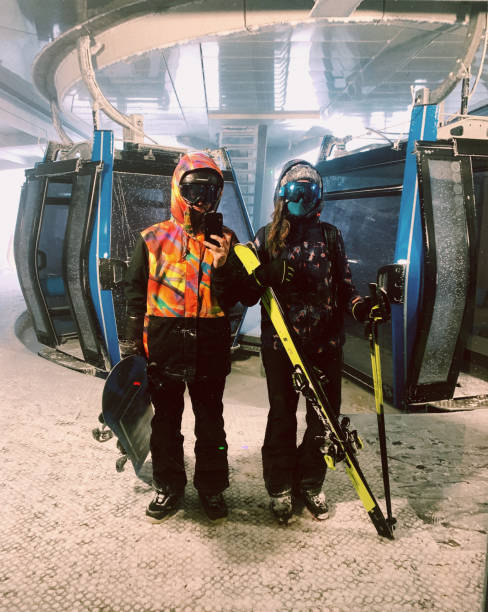
To wind off the very question what to wear when snowboarding
Snowboarding attire has a lot of influence from skateboarding due to the crossover culture. As a result, they are usually zanier than the more conservative skiing gear.
The above writeup has dwelt on the science of layering and has presented all the wearables you need to start your skateboarding journey well prepared.
Before you hit the shop, you must understand that the best gear is expensive. That's because the manufacturers spend a lot on R&D and use high-quality raw materials to make them.
If you are smart and understand the science behind what to wear when snowboarding, you'll be able to achieve a good balance between cost and the functionality of your snowboarding gear.
And once you are done with your gear, hit the slopes with confidence.
Last updated on October 2nd, 2022 at 08:52 am

